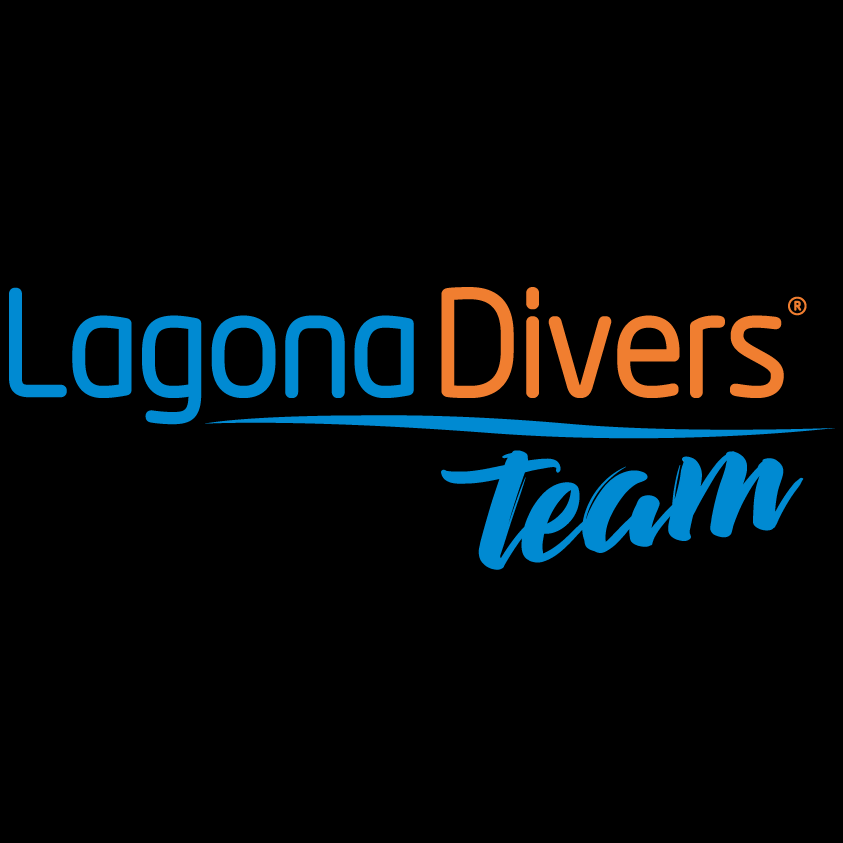What is Decompression Sickness?
In our drive to explore the underwater world, we are sometimes reminded that it is not without consequences. Every time we descend beneath the surface, we put ourselves at risk of developing decompression sickness (DCS).
For recreational dives, the chance of developing decompression sickness is about 0.01-0.04%, according to Divers Alert Network (DAN).¹
But what are the mechanics that control this process? And what factors can increase our risk of developing DCS?
Let’s dive in!
What Causes Decompression Sickness?
Decompression sickness occurs when dissolved inert gas stored in the body’s tissues begins to form bubbles as the ambient pressure is decreased. These bubbles activate an immune response from the body, leading to tissue damage and inflammation.
Let’s break this process down.
The Process of Breathing Underwater
The deeper we dive, the higher the ambient pressure is – that’s one of the first principles of diving.
| Depth (Metres) | Pressure (Bar) |
| 0 | 1 |
| 10 | 2 |
| 20 | 3 |
| 30 | 4 |
| 40 | 5 |
And in order to breathe below the surface, the pressure of the gas we breathe must be the same as the ambient pressure.
So if we’re diving at 20 metres where the ambient pressure is 3 bar, that means that the gas we are breathing will also be at 3 bar – if it weren’t, then our lungs couldn’t inflate!
Partial Pressures
As the pressure of the gas we breathe increases, so too does the pressure of the individual parts of the gas. These are known as the partial pressures of a gas.
For example, air is composed of 21% oxygen and 79% nitrogen. This means that – at surface pressure (1 bar) – the partial pressures are 0.21 and 0.79, respectively. If we are to dive deeper, say to 10 metres (2 bar), the partial pressures will double as the ambient pressure doubles – giving us 0.42 for oxygen and 1.58 for nitrogen.
So, what does this mean for us as divers?
Henry’s Law
Henry’s law states that at a constant temperature, the amount of gas that dissolves into a liquid is directly proportional to the partial pressure of the gas in equilibrium with the liquid.
That may sound like a mouthful, but it’s one of the most important rules to understand in diving.
What it means is that as the partial pressures in the gas we breathe increase as we descend, this ‘extra’ gas dissolves into our body’s tissues until it reaches equilibrium with the ambient pressure. This is known as the process of on-gassing.
Essentially, our body always wants to be in equilibrium with the ambient pressure. When we descend from the surface to 10 metres, for example, the partial pressures in our tissues are initially 0.21 and 0.79 for oxygen and nitrogen, respectively. However, the partial pressures in the gas we breathe at 10 metres are 0.42 and 1.58, as the ambient pressure is doubled. Our body doesn’t like this disequilibrium and begins to ‘on-gas’. It does this until our tissues have oxygen and nitrogen partial pressures 0.42 and 1.58 – equal to that of what we breathe. This state of equilibrium is known as ‘saturation’.
The reverse process occurs when we ascend. Our tissues begin to ‘off-gas’ as the inhaled partial pressures are less than the partial pressures in our tissues. Our body will continue to off-gas until it reaches equilibrium with the ambient pressure again.
Inert gases
Oxygen is used by our body. So any extra oxygen we absorb is simply consumed by our tissues.
But, nitrogen is not used by our body. It’s what is known as an inert gas. Inert gases play no function in our bodily processes, and are therefore simply stored in our tissues during the on-gassing process.
And it is this dissolved inert gas in our tissues that can lead to decompression sickness when we begin to ascend. If the partial pressure of dissolved inert gas is too high relative to the ambient pressure, then the inert gas begins to come out of solution and turns into bubbles.
As an extreme example, an air diver saturated at 40 metres (5 bar) has a dissolved inert gas partial pressure of 3.95 bar. If this diver were to then rapidly ascend to the surface in less than a minute, the ambient pressure is now only 1 bar. This massive difference between dissolved inert gas pressure and ambient pressure could easily lead to bubble formation and decompression sickness.
| 🔍 Ambient pressure vs. inhaled inert gas pressure: The difference between the pressure of dissolved inert gas in the tissues and the inhaled inert gas pressure in the lungs controls off-gassingThe difference between the pressure of dissolved inert gas in the tissues and the ambient pressure controls bubble formation |
The Inert Gas Bubble
But what’s the big deal with bubbles, you may ask?
The combined work of bubbles and the body’s immune response to bubbles is what results in decompression sickness.
Bubbles denature blood proteins, which the body then recognises as foreign invaders, activating the immune response system. The platelet system is activated as part of this response, causing the platelets to clot at the bubble site. These clots block blood flow, leading to tissue hypoxia, damage and death. Tissue damage leads to the release of fats, which further exacerbates clotting, blocked blood flow and inflammation.
In addition, the bubbles themselves impinge and stretch nerve endings. They can also get lodged in critical places, such as the spinal cord and brain, causing tissue hypoxia, paralysis and death.
Not so cool, right?
Decompression Sickness Symptoms
Decompression sickness has different levels of severity, as well as long-term and short-term consequences. Generally, it can be classified into 4 separate types.
For Type 1 and 2 DCS, the time to onset of symptoms is most commonly within the first three hours after surfacing, with symptoms occurring in over 80% of cases within the first hour.²
Type 1 Decompression Sickness

Type 1 decompression sickness is classified as a “mild” form of the disease. It usually manifests itself as joint pain, skin itching or rashes. Mild Type 1 cases sometimes go away without formal treatment, but nevertheless they should always be assessed by a hyperbaric doctor. Often, Type 1 DCS cases still require recompression. Similarly, Type 1 symptoms can often be precursors to Type 2 DCS, which is life-threatening.
Type 2 Decompression Sickness

Type 2 decompression sickness is a much more serious manifestation of DCS and can often be life-threatening. It also has the potential to leave you with long-term and/or permanent damage.
Type 2 DCS has two sub-classifications:
- Cardiovascular/Pulmonary (“The Chokes”)
- Neurological
Cardiovascular/Pulmonary decompression sickness happens when bubbles accumulate in the lung capillaries surrounding the alveoli. This can result in serious breathing difficulties as well as a dry persistent cough. Because of these symptoms, this classification is sometimes known as ‘the chokes’.
Neurological decompression sickness happens when bubbles are present in the nervous system. These bubbles can disrupt transmissions and messaging, leading to paralysis, numbness, loss of bladder and bowel control, and cognitive impairment, among other things.
Type 3 Decompression Sickness

Type 3 decompression sickness refers to DCS induced by Isobaric Counter Diffusion (ICD). It is also commonly referred to as ‘Inner Ear Decompression Sickness’.
| 🔍 What is Isobaric Counter Diffusion? Isobaric Counter Diffusion simply refers to the situation in which one inert gas diffuses into a tissue at a faster rate than a second inert gas can leave the same tissue. This causes an overall increase in tissue supersaturation, which results in bubble formation and DCS. |
This occurs when a diver switches from a helium-rich mixture to a nitrogen-rich mixture, during a gas switch. The nitrogen dissolves quicker into the tissue than the helium can leave it, causing supersaturation levels to increase and bubbles to form. This results in ear-infection-like symptoms, such as vertigo.
Type 3 DCS is something very rare and – for most of us – is something we’re not at risk of. It can only occur when two inert gases are used – namely, nitrogen and helium. So it only affects commercial and technical divers. Similarly, its effects can only occur during dives deeper than 100 metres.
So it’s not something most of us need to worry about.
Type 4 Decompression Sickness
Type 4 Decompression sickness is a classification used to refer to the long-term effects of diving. Specifically, it refers to Dysbaric Osteonecrosis (DON).
DON, in simple terms, means bone-cell death. This is caused by repeated exposure to changing ambient pressures, and is something that all divers are at risk of – although the risk is minimal.
Your risk for DON does seem to increase with increased depths and exposure times. However, it has been suggested that it has more to do with the quality of your dive profiles.²
Decompression Sickness Treatment
The most effective treatment for decompression sickness is recompression in a hyperbaric chamber.
Depending on the severity of the bend, a specific recompression schedule will be used. The most common are US Navy Table 5 and 6. For very deep dives, Comex Table 30 is sometimes used.²

Recompression crushes the bubbles, causing the inert gas to go gradually back into solution. This is normally combined with the breathing of pure oxygen, which accelerates the rate of off-gassing.
In any case, the breathing of pure oxygen as soon as symptoms are recognised can greatly increase your chances of full recovery.
Factors Affecting Your Risk of Decompression Sickness
While decompression theory remains a somewhat mysterious science, there are still definite factors that can affect your risk of developing DCS.
| 🔍 Factors affecting your risk of DCS: DehydrationTemperature Age ObesityExerciseDrugsLung shuntPatent Foramen Ovale (PFO) SmokingDive profilePrevious DCS |
As a broad generalisation, anything that can affect your circulatory system can affect your rate of on- and off-gassing, which in turn can affect your risk of developing decompression sickness.
Bring Your Knowledge to the Next Level!
If you’re looking to expand your theoretical knowledge of diving further, then enrolling in a SSI Science of Diving program may just be the perfect next step! Or, if you’re simply looking to level up your diving game, Lagona Divers can make that happen!
Contact us to arrange your next course in the sunny seaside town of Dahab, Egypt!
References
- Denoble, P. (2010) The Validation of Dive Computer Decompression Safety. Divers Alert Network. Accessed 10.09.22. URL: https://dan.org/alert-diver/article/the-validation-of-dive-computer-decompression-safety/.
- Powell, M. (2016) Deco for Divers: A Diver’s Guide to Decompression Theory and Physiology. 2nd edn. AquaPress Ltd. Essex.


